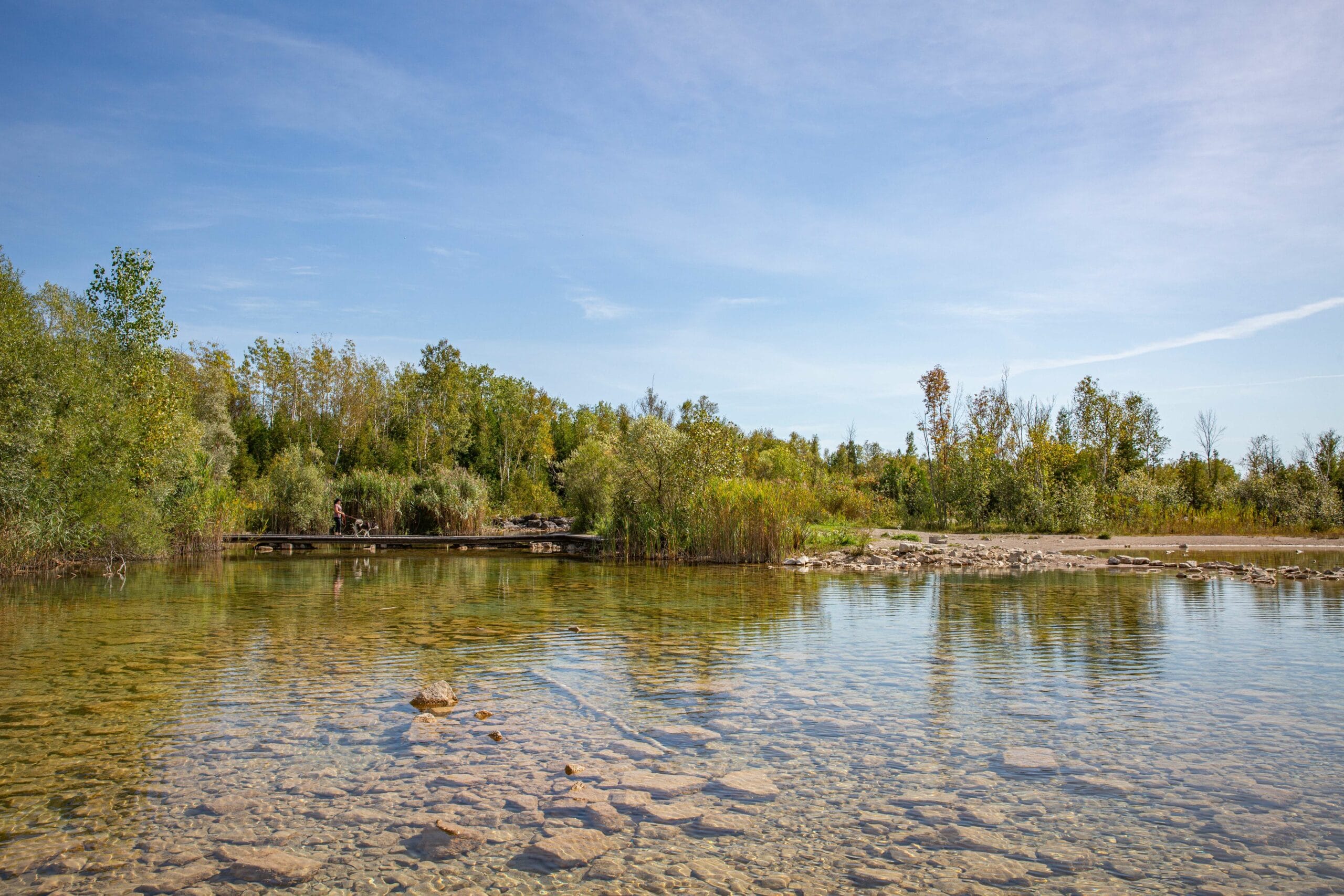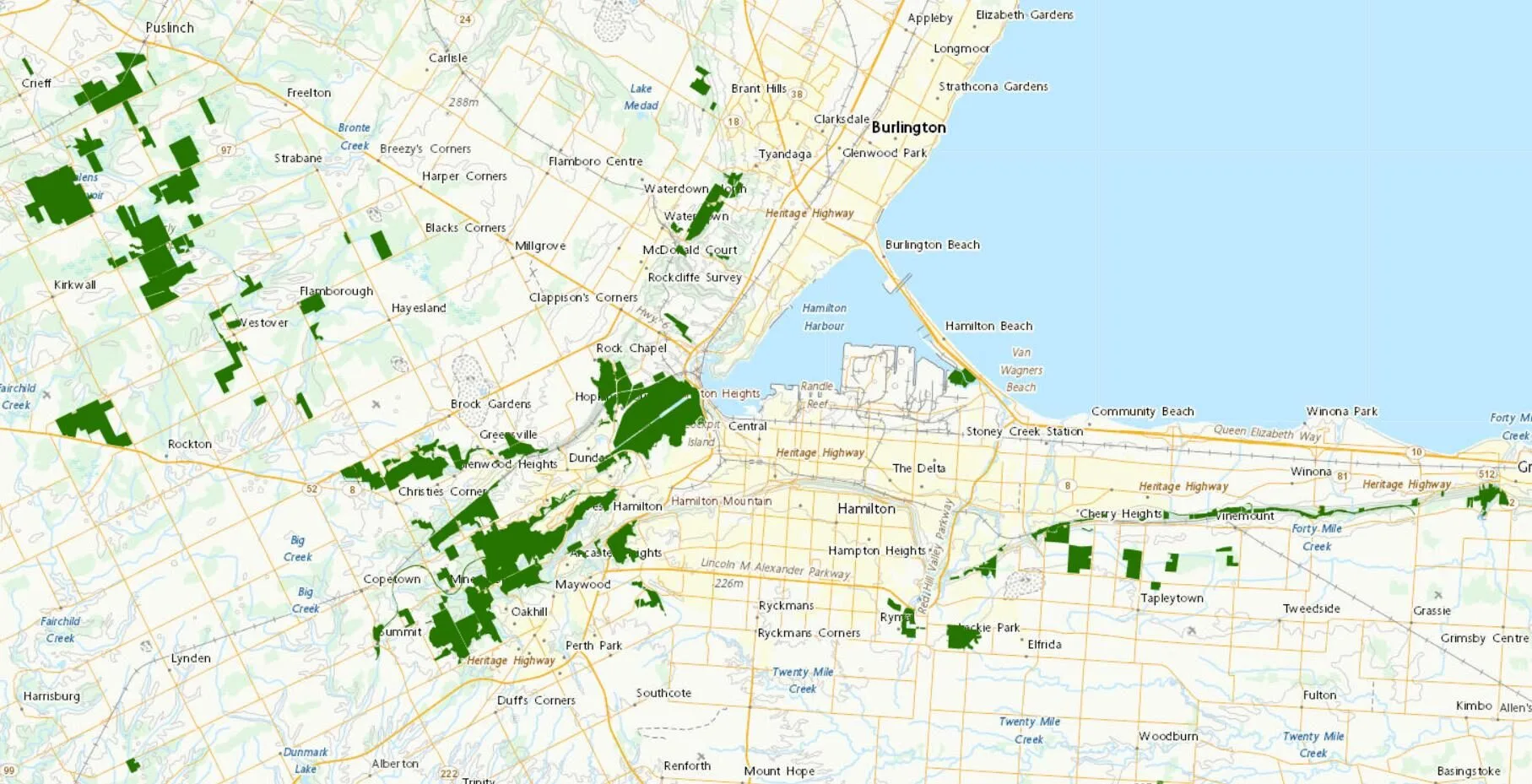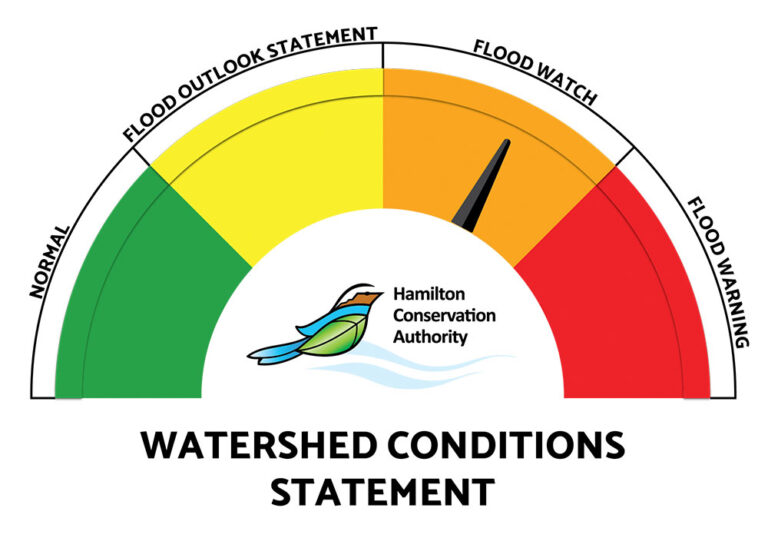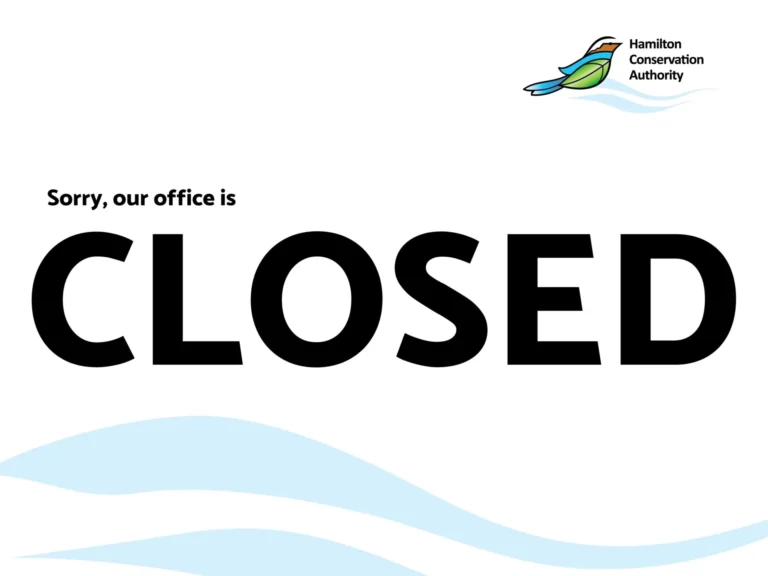HCA Contributes Almost 4,000 Hectares of Protected Lands to Support Canada’s 30×30 Conservation Target

Hamilton Conservation Authority (HCA), in collaboration with Ontario Nature, is proud to announce the addition of 1,675.6 hectares (4,140.5 acres) of conservation lands in support of Canada’s 30×30 target, which aims to protect 30 percent of our lands and waters by 2030. This builds on HCA’s previous 2023 contribution of three properties totalling 2,239 hectares, bringing our total contribution to 3,914.6 hectares (9,683.8 acres) to date. These lands represent 83% of HCA’s land holdings, reflecting our commitment to protecting ecologically significant areas that contribute to national conservation goals and strengthen the health of our local watershed.
The new addition comprises 19 properties across the HCA watershed, including high-quality natural areas selected for their ecological significance and biodiversity value. Spanning five Areas of Natural and Scientific Interest and seven Provincially Significant Wetlands, they provide critical habitat for a range of species, including species at risk. These areas play a key role in maintaining healthy ecosystems by supporting biodiversity, regulating water systems, and contributing to climate resilience. They also offer opportunities for nature-based recreation and community connection.
The partnership with Ontario Nature facilitated an extensive assessment of these lands, determining that HCA’s properties meet the pan-Canadian standards necessary for inclusion in the national target. HCA’s involvement marks a significant step towards halting and reversing biodiversity loss through our dedication to the stewardship and conservation of near-urban nature.
“Our heartfelt congratulations to HCA on their outstanding contributions of protected areas towards Canada’s target,” said Tony Morris, Conservation Policy and Campaigns Director at Ontario Nature. “This marks HCA’s second contribution to the target, representing the organization’s high standard for biodiversity conservation. HCA’s efforts ensure a network of green space is being stewarded for wildlife to thrive and communities to enjoy. Ontario Nature is proud to partner with HCA as a leader in this work.”
Notable areas that now count towards the 30×30 target include Borer’s Falls, Christie Lake, Crooks’ Hollow, Dundas Valley, and Eramosa Karst, as well as Felker’s Falls, Fletcher Creek Ecological Preserve, and Hayesland Wetland. Additional contributions come from Iroquoia Heights, Lower Spencer Creek, Meadowlands, Mount Albion, Saltfleet, and Spencer Gorge. Valens Lake, Vinemount, Westfield Heritage Village, Westover Wetland, and Winona round out this diverse collection of protected natural spaces.

The natural areas contributed by the HCA showcase some of the most ecologically valuable and diverse landscapes in southern Ontario. Stretching across the Niagara Escarpment and associated watersheds, these sites encompass rare and sensitive ecosystems, including provincially significant wetlands, old-growth forests, karst formations, alvar communities, and cold-water streams. Key areas provide habitat for a remarkable range of Species at Risk, such as the nationally endangered Red Mulberry, Jefferson Salamander, Butternut, Eastern Meadowlark, and several species of endangered bats and birds like the Red-headed Woodpecker and Louisiana Waterthrush. Sites such as Spencer Gorge, Eramosa Karst, and Fletcher Creek preserve geological and hydrological features that support rare biotic communities and vital ecological functions, including groundwater recharge, water filtration, and habitat for indicator species like Brook Trout. These protected lands also play an essential role in ecological connectivity, linking Cootes Paradise, the Bruce Trail, and the broader Niagara Escarpment corridor.
“Protecting nature close to home is one of the most powerful things we can do for future generations,” said Brad Clark, HCA Chair. “This contribution to Canada’s 30×30 target reflects HCA’s long-standing commitment to conservation, climate resilience, and community well-being. These 19 properties represent not just hectares of protected land, but vital habitats, clean water, and a legacy of stewardship we can all be proud of.”
This contribution directly supports HCA’s 2025–2029 Strategic Plan by advancing natural heritage conservation, protecting critical habitats, and supporting biodiversity. It also strengthens flood protection and climate resilience, aligns with water resource priorities, and fosters community connection to nature through recreation and education. This reflects HCA’s commitment to a healthy, sustainable watershed for all.
HCA’s commitment to the 30×30 target aligns with the Municipal Protected Areas Program (MPAP), led by Nature Canada, which supports municipalities and conservation groups in recognizing and protecting urban green spaces.
Additional Resources
Canadian Protected and Conserved Areas Database
Open Maps Data Viewer




